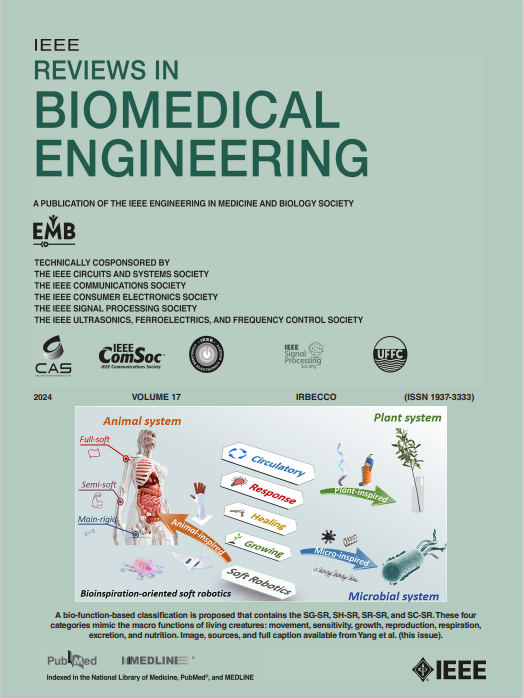Lower-Limb Medical and Rehabilitation Exoskeletons: A Review of the Current Designs
IF 17.2
1区 工程技术
Q1 ENGINEERING, BIOMEDICAL
引用次数: 23
Abstract
Medical and rehabilitation exoskeletons are being increasingly considered by therapists when choosing a treatment for individuals affected by lower limb impairments. Although all such exoskeletons seem to provide similar features and performance, there are, in practice, significant differences among them in terms of maximum walking speed, maximum torque, weight, autonomy, interaction with the user, or even the way to use it. In this review, the state of the art of the main commercial exoskeletons is described, while analyzing their properties, advantages, and disadvantages. Three groups are considered: complete exoskeletons, partial exoskeletons and open lines of research. A comparative analysis between them is performed while considering the main scientific and technical aspects to be improved. In conclusion to this analysis, the balance between feasibility and innovation in exoskeletons development is a design challenge. Commercial exoskeletons must fulfil standards whilst ensuring their safety and robustness. However, achieving a new generation of exoskeletons means a need to implement new hardware paradigms, and to enhance control strategies focused on assist-as-needed scheme. Finally, some aspects to improve current designs of the exoskeleton are presented.下肢医疗和康复外骨骼:当前设计综述
治疗师在为下肢损伤患者选择治疗方法时,越来越多地考虑使用医疗和康复外骨骼。尽管所有这些外骨骼似乎都提供了相似的功能和性能,但在实践中,它们在最大行走速度、最大扭矩、重量、自主性、与用户的互动,甚至使用方式方面存在显著差异,以及缺点。考虑了三组:完整外骨骼、部分外骨骼和开放式研究线。在考虑需要改进的主要科学技术方面的同时,对它们进行了比较分析。总之,外骨骼开发的可行性和创新性之间的平衡是一个设计挑战。商用外骨骼必须符合标准,同时确保其安全性和坚固性。然而,实现新一代外骨骼意味着需要实现新的硬件模式,并增强专注于按需辅助方案的控制策略。最后,提出了改进外骨骼设计的一些方面。
本文章由计算机程序翻译,如有差异,请以英文原文为准。
求助全文
约1分钟内获得全文
求助全文
来源期刊

IEEE Reviews in Biomedical Engineering
Engineering-Biomedical Engineering
CiteScore
31.70
自引率
0.60%
发文量
93
期刊介绍:
IEEE Reviews in Biomedical Engineering (RBME) serves as a platform to review the state-of-the-art and trends in the interdisciplinary field of biomedical engineering, which encompasses engineering, life sciences, and medicine. The journal aims to consolidate research and reviews for members of all IEEE societies interested in biomedical engineering. Recognizing the demand for comprehensive reviews among authors of various IEEE journals, RBME addresses this need by receiving, reviewing, and publishing scholarly works under one umbrella. It covers a broad spectrum, from historical to modern developments in biomedical engineering and the integration of technologies from various IEEE societies into the life sciences and medicine.
 求助内容:
求助内容: 应助结果提醒方式:
应助结果提醒方式:


